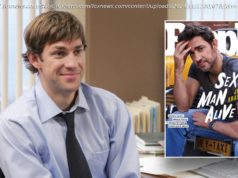Skiing was a niche pursuit when he began filming it in the 1940s. His movies popularized the sport and helped create a multibillion-dollar industry.
Warren Miller, a passionate skier and filmmaker whose movies introduced skiing and snowboarding to a wide audience, died on Wednesday at his home on Orcas Island in Puget Sound, near Seattle. He was 93.
His death was confirmed by Warren Miller Entertainment, the film company he founded and ran for four decades.
In 1946, at 22,Mr. Miller bought an eight-millimeter movie camera and headed from Los Angeles to Sun Valley, Idaho, a winter playground for the likes of Ernest Hemingway.
His stay was hardly glamorous. He lived in a camper trailer in a parking lot, worked as a ski instructor and hunted wild game for food. Still, each winter for the next several years, he returned to Los Angeles in the summer with skiing footage that captivated friends and provided the seed for a 50-year career devoted to bringing the mountains to the masses.
Mr. Miller’s films depicted winter sports with grandeur, beauty and a mischievous sense of fun that attracted viewers who had never set foot on a slope. The mainstream appeal of his films helped turn winter sports from a niche pursuit to a widely popular pastime and a multibillion-dollar industry.
“Warren Miller is the man who made the snowball that created the whole industry,” Dirk Collins, a founder of the adventure sports production company Teton Gravity Research, told Outside magazine for a 2004 profile of Mr. Miller.
Without any cinematic training, while working as a ski instructor in Sun Valley, Mr. Miller created “Deep and Light” in 1949 using a borrowed 16-millimeter movie camera. It was the first of more than 500 feature and promotional films he made.
His feature films hewed to a simple formula, depicting winter-sport athletes in challenging locales, leavened with wipeouts and shots of pretty female skiers. Performers spanned generations, including Jean-Claude Killy, who won three Olympic gold medals in 1968, and Stein Eriksen, who won one in 1952. But in all his movies, the narration of Mr. Miller, who delivered deadpan wisecracks in his trademark baritone, loomed largest.
“Looking back on what set my films apart,” he recalled in his autobiography, “Freedom Found” (2016), “it was the emphasis on entertaining people, which means making them laugh.”
Having known privation while growing up during the Depression and in his early days as a ski bum, Mr. Miller was no snob. He was inclusive in his embrace of the mountain scene, featuring fads such as freestyle ballet skiing and snow kayaking in his films. His “Escape to Ski” (1998) championed snowboarding at a time when that upstart activity was barred at many ski resorts across the United States.
For the first 14 years of his career, Mr. Miller provided all the photography, editing and music for his movies, and spent up to eight months traveling to mountain locations around the world. He screened his films in rented halls with live narration, a practice developed by the ski cinema pioneer John Jay.
As skiing grew in popularity, so did Mr. Miller’s films. By 1960 he was booked for screenings in more than 100 cities. Unable to attend every show, he began recording narration. His audience did not seem to mind. Mr. Miller’s films became an annual autumn rite among skiers looking forward to the season’s first snows.
Mr. Miller’s films also kept pace with new styles of skiing and innovations in the sport over the decades. In 1954 he filmed Stein Eriksen performing a front flip on skis, one of the earliest examples of what would become known as freestyle skiing. In 1985 he released “Steep and Deep,” a film that featured a fresh generation of extreme skiers who launched from cliffs and performed tricks and showed how far freestyle skiing had come in three decades.
Born on Oct. 15,1924, in Hollywood, Mr. Miller was the youngest of three children. His father, Albert, was a radio actor, and his mother, Elena, sewed quilts for the Works Progress Administration during the Depression.
Mr. Miller learned to ski as a Boy Scout on trips to the San Gabriel Mountains, north of Los Angeles. In 1942 he enrolled in a naval officers’ training program at the University of Southern California, where he studied astrophysics. He left the university to serve in the Pacific during World War II. Discharged in 1946, he bought his first movie camera with a $100 Navy bonus and set off for the mountains.
In 1989 Mr. Miller sold Warren Miller Entertainment — including his archives and the rights to his voice and name — to his son Kurt and a partner. He continued to narrate films until 2005 as the company changed hands again, first to Time Warner in 2002, then to the Bonnier Corporation, a Swedish publisher. Active Interest Media acquired the company in 2013.
In September 2009, Warren Miller Entertainment sued a Colorado production company for copyright infringement after Mr. Miller narrated one of its films, arguing that he had relinquished the right to use his name and voice in other ski films when he sold the company. Mr. Miller, in turn, filed a motion to intervene, essentially asking that the Miller company sue him instead. A year later, an arbitration panel determined that Mr. Miller’s appearance in the film did not cause harm to the company and that Mr. Miller was free to use his own name, likeness, voice and brand in anything outside of ski movies.
In 2016 he returned to narrate a section of a Warren Miller Entertainment film, “Here, There & Everywhere,” featuring the skier Ingrid Backstrom and the rider Jeremy Jones.
In addition to his son Kurt, Mr. Miller is survived by his wife of 30 years, Laurie; another son, Scott; a daughter, Chris Lucero; a stepson, Colin Kaufmann; and five grandchildren.
Mr. Miller continued to write a weekly column about the outdoors for several small newspapers in the West and served as honorary director of skiing at the Yellowstone Club in Big Sky, Mont., an exclusive enclave whose members have included Bill Gates and former Vice President Dan Quayle.
In a 2008 speech, Mr. Miller summed up with uncharacteristic seriousness what had led him — as well as ski bums and heads of state and corporations — to head for the mountains.






